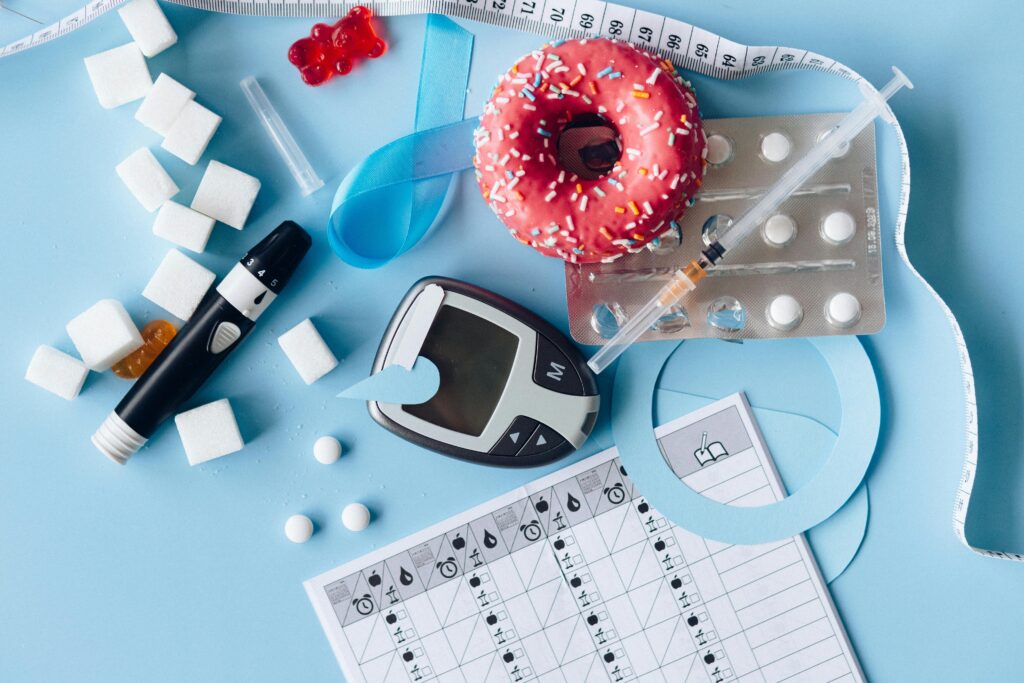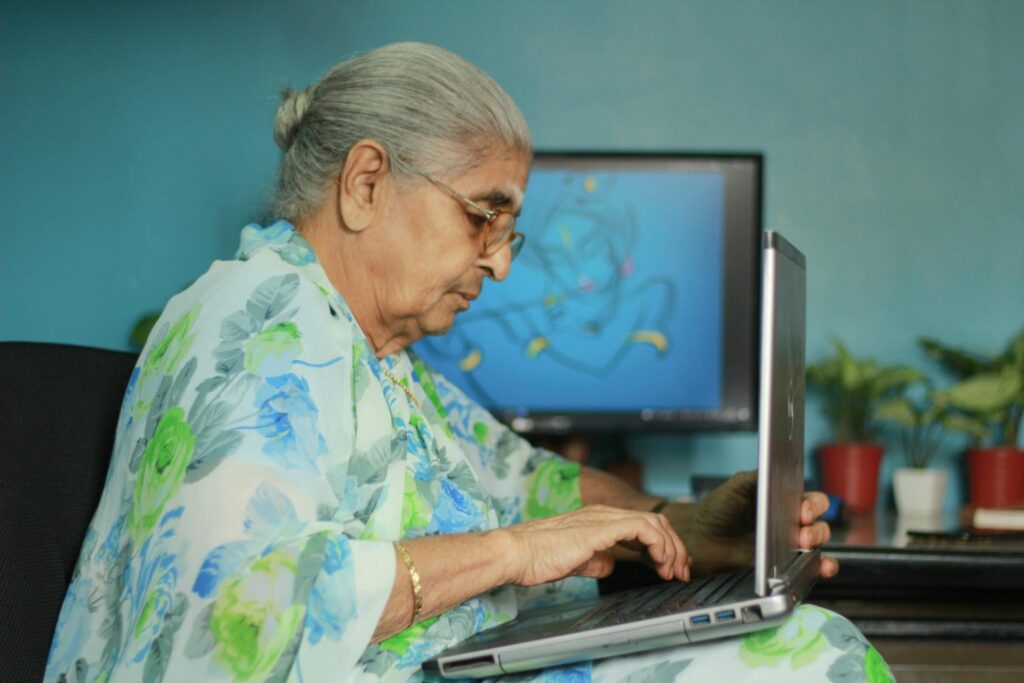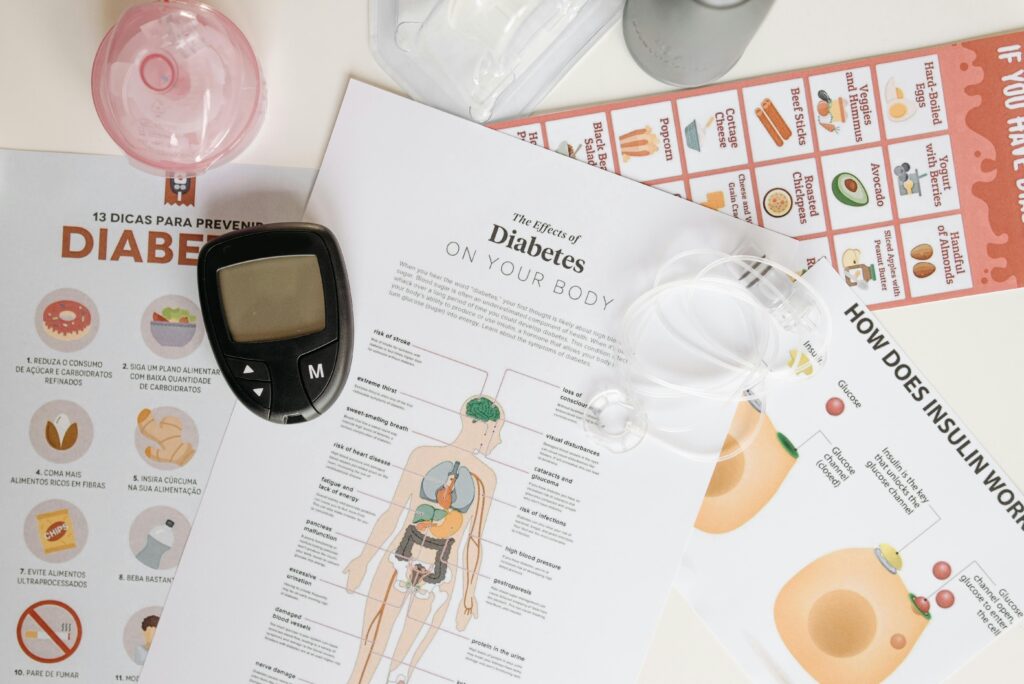Diabetes is common as we grow older. With the right daily habits at home, people with diabetes can stay healthy, active, and independent. Small, steady changes in food, movement, medicine, and home care make a big difference.
Understand diabetes in simple terms
Diabetes means the body does not manage blood sugar well. That can be because the body makes less insulin, or the insulin does not work well. High blood sugar damages the heart, eyes, kidneys, nerves, and feet over time. Keeping sugar levels steady lowers these risks.
Your doctor will tell you the blood sugar targets that are right for you. Follow those targets and check regularly.
Food: easy changes that matter (with familiar foods)
Food is the most powerful way to control sugar. Small food changes add up.
- Eat regular meals. Avoid long gaps and avoid heavy late-night meals.
- Prefer whole grains over refined flour. Choose wholegrain rotis, millets, or brown rice more often than white rice and refined flour.
- Include pulses and lentils every day. Moong, masoor, and other dals give steady energy and protein.
- Eat vegetables at every meal. Non-starchy vegetables are best: greens, beans, carrots, tomatoes, cucurbits.
- Choose fruit, but watch portions. One small fruit or a bowl of chopped fruit is usually enough. Avoid fruit juices.
- Include healthy proteins: curd, paneer, eggs, fish or lean meat if eaten. Nuts and seeds in small amounts help too.
- Cook with less oil. Steam, grill, or stir-fry instead of deep-frying.
- Cut down on sweets, sweets in tea/coffee, and sugary drinks. Replace sweets with small portions of fresh fruit or a handful of nuts when you crave something sweet.
- Use spices and herbs to flavor food instead of extra salt or fat. Cinnamon, fenugreek, turmeric, ginger, and garlic can help flavor food and support health.
- Control portion sizes. A smaller plate helps avoid overeating.
- Stay hydrated with water. Avoid sugary drinks.
If you use a traditional sweet on special days, keep the portion tiny and plan it into the day’s food so the overall balance stays steady.
Check blood sugar the right way
- Learn how and when to check sugar at home with a glucometer if advised by the doctor.
- Keep a simple log of readings: date, time, number, and any notes (heavy meal, missed medicine, exercise).
- Test at times recommended by your healthcare team (for example, fasting in the morning and 2 hours after a main meal).
- Don’t be alarmed by one high or low value. Look for patterns and share the log with the doctor.
- Always carry a small snack (glucose tablet, fruit, or plain biscuits) in case of low sugar episodes.
Medicines: take them correctly
- Take medicines exactly as prescribed. Do not stop or change doses without talking to the doctor.
- Use pill boxes or set phone alarms for medicine times. Family members can help with reminders.
- Keep an updated list of all medicines, doses, and any side effects. Take the list to every medical visit.
- If you use insulin, learn the correct injection technique, storage rules, and how to manage low sugar. Ask the nurse or doctor to show you until you are confident.
Foot care: protect the feet every day
Nerve damage and poor blood flow can make foot problems serious. Simple daily care prevents trouble.
- Check the feet every day for cuts, redness, blisters, or swelling. Use a mirror if you can’t see the soles.
- Wash feet daily, dry them well (especially between toes), and apply a light moisturizer. Avoid lotion between toes.
- Trim nails straight across and smooth the edges gently. If vision or mobility is poor, ask a family member or podiatrist for help.
- Wear comfortable, well-fitting shoes. Avoid walking barefoot, even at home.
- Avoid hot water bottles or direct heat on feet—reduced sensation can cause burns.
- If you notice any wound, swelling, or persistent redness, see a doctor early.
Move gently every day
- Aim for regular movement: walking, gentle stretching, or chair exercises. Even short, frequent activity helps.
- Try for 20–30 minutes daily, or break it into small sessions if needed.
- Include balance and strength work if you can—this helps with falls and keeps muscles strong.
- If you have other health problems (heart, joint, eye), follow the doctor’s advice on safe activity.
Sleep, stress, and mood
- Good sleep supports sugar control. Keep a regular sleep schedule.
- Stress raises blood sugar. Use simple relaxation: slow breathing, short walks, music, prayer, or quiet hobbies.
- Talk about worries with family or a trusted friend. If low mood or anxiety lasts, seek medical help—treatment improves recovery and daily life.
Family role and home routines
- Family support is vital. Loved ones can help with medicines, food choices, exercise plans, and clinic visits.
- Keep medicine, water, and a glucometer in a regular spot to make routines easy.
- Plan meals together. When family eats the same healthy food, it is easier for the person with diabetes to stick to the plan.
- Teach one family member basic steps for low-sugar emergencies and where to find quick sources of sugar.
Avoid complications with regular checks
- Keep regular medical reviews for eyes, kidneys, feet, and heart as advised. Early problems are easier to treat.
- Monitor blood pressure and cholesterol—these affect long-term risk.
- Vaccinations (flu, pneumonia) are important for older adults; ask the doctor which vaccines are due.
When to seek urgent help
Call for help or go to the clinic if there is:
- Very high blood sugar with vomiting, breath that smells fruity, or deep, fast breathing (signs of a serious condition).
- Sudden chest pain, breathlessness, weakness on one side, or slurred speech.
- Severe low sugar: confusion, fainting, seizures, or inability to swallow.
Quick action saves lives.
Practical, affordable tips for everyday life
- Cook at home more often—home-cooked meals usually have less hidden sugar and fat.
- Buy seasonal produce from local markets for fresh and cost-effective vegetables and fruits.
- Use community spaces for walking or join simple group classes if available.
- Speak with the doctor about low-cost medicine options or government schemes if cost is a worry.
Small steps, big results
Controlling diabetes at home is not about perfection. It is about steady, sustainable choices. A balanced plate, gentle daily movement, correct medicines, careful foot care, and strong family support add up to better health and more days of comfort and independence.
💬 Share your experience
Do you care for someone with diabetes at home? What simple tips have helped you? Share your story in the comments to help other families.
📢 Found this useful? Please share the blog with friends and family—small changes can bring big benefits.






